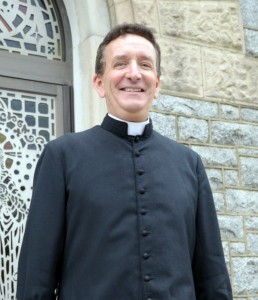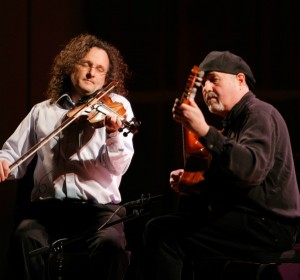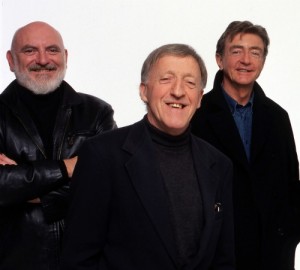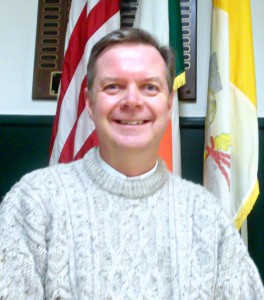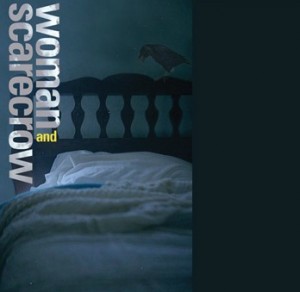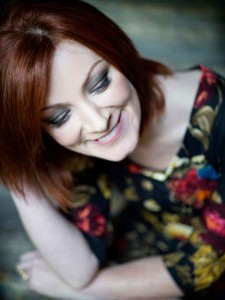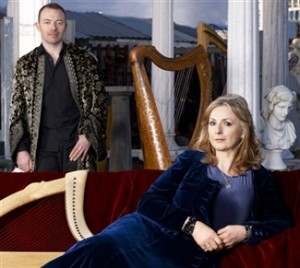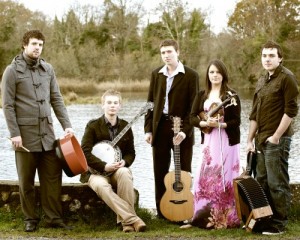Among the South Philly Review’s 2012 Readers’ Choice award winners:
Termini Brothers for cannolis, John’s on East Snyder Avenue for roast pork sandwiches, the South Philadelphia Tap Room for the best selection of craft beers, and Father Joseph J. Kelley of St. Monica’s at 17th and Ritner for top priest or minister.
Kelley’s name bubbled to the surface in the section of the Readers’ Choice award balloting devoted to the neighborhood’s favorite people, a short list that included the likes of civic leader Barbara Capozzi and local DJ Johnny Looch.
Kelley confesses he’s flattered, but he kiddingly suggests that with so many relatives scattered throughout South Philadelphia, he had an unfair advantage.
“I grew up with these people,” he laughs. “My life is an open book. There can’t be any surprises there.”
Kelley’s boyhood home was at 933 Pierce Street, on the other side of Broad Street from St. Monica’s, in St. Nicholas of Tolentine parish. The neighborhood is a well-known blend of nationalities, with Italians and Irish figuring prominently. Kelley’s family tree sprouts off in both directions. His father’s name was John, and the Kelley family roots go back to County Monaghan; his mother, Phillomena, was a Coppola. Consequently, Kelley grew up with both traditions.
Kelley’s parish likewise is a marriage of two great European Catholic communities. For most of its early history, St. Monica’s was stoutly Irish, with pastors named McManus, Timmins, Walsh and Farrell. Their portraits hang in the hallway of St. Monica’s rectory. Relics of the parish’s Irish past aren’t hard to find. There’s a monument in memory of Monsignor Aloysius F.X. Farrell along the 17th Street side of the church. Farrell led a hugely ambitious rebuilding project following a catastrophic fire in the 1970s. Just a few steps away stands a blue historical marker honoring light-heavyweight boxing champ Tommy Loughran, the “Philly Phantom,” who grew up nearby.
The parish is mostly Italian now, though there are still plenty of Irish in the mix.
Kelley, resplendent in his flowing cassock, is tall, with dark, curly hair. His features seem to favor the Coppola side of the family. On the day we meet, he’s looking forward to an annual get-together with siblings, nieces and nephews in which they will spend hours baking Easter ham pies, some of which will be shipped overnight to South Philly exiles now living in Florida.
Kelley has been a priest for nearly 25 years, and for 21 of those years he has been posted in Philadelphia. “That’s very uncommon,” he says. Early assignments included Sacred Heart at 3rd and Reed, and St. Edmonds at 21st and Snyder. In 1999, he was named principal of Archbishop Wood High School in Warminster.
He was thrilled when, in 2003, Cardinal Bevilaqua assigned him to be pastor of St. Monica’s. “It was just after Ash Wednesday, and I got a call that the cardinal wanted to see me,” he says. Kelley surmised that a new assignment was in the offing, but he had no inkling what was to come next. A friend and fellow priest guessed Kelley was going to be sent to St. Monica’s, but he didn’t believe it. Then, when the cardinal offered him the pastorship of this vibrant South Philadelphia faith community, he recalls, “My jaw hit the floor; I was absolutely stunned.”
Although Kelley enjoyed his time in the Bucks county ‘burbs, he’s grateful to be back in his old stomping grounds.
“I’m a city kid,” he says. “I’m green. I never use a car. I take the subway, or I walk.”
It’s not hard to see how Kelley was the people’s choice. He seems to know everyone. As he stands on the stone steps in front of the church, he sees a young man walking down Ritner from 17th. “Hey, how’s your mom?” Kelley calls out. “You’re coming for Palm Sunday, aren’t you?” A warm and friendly conversation ensues.
The Readers’ Choice award took Kelley completely by surprise, he says, and left him with a feeling of deep gratitude.
“I grew up with these people. I’m related to these people. When you love a place so much, and you love a people so much, it’s good to know you’re loved back.”

